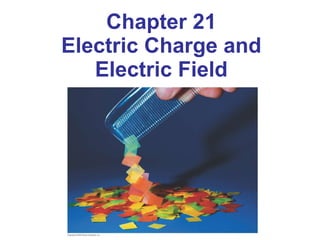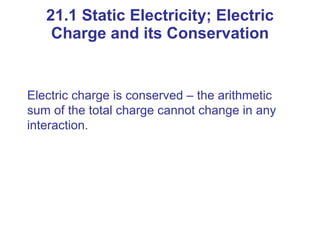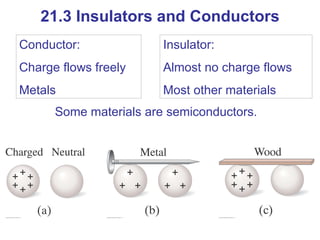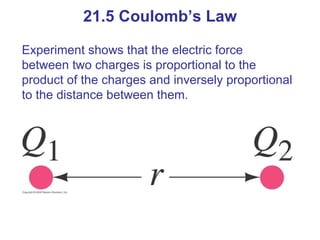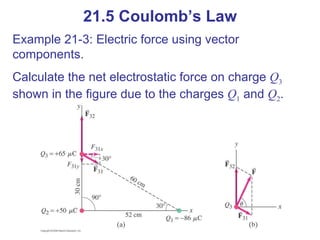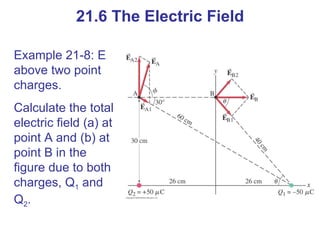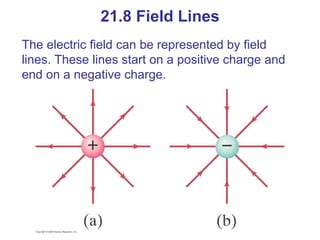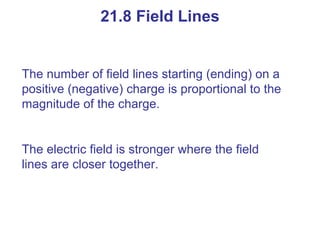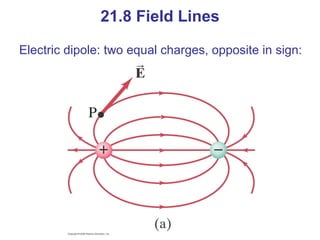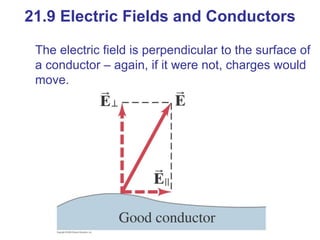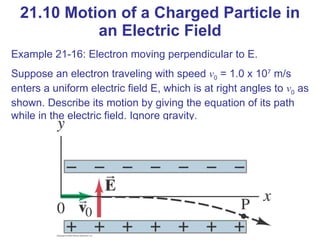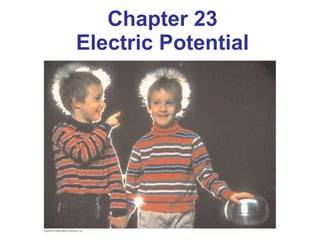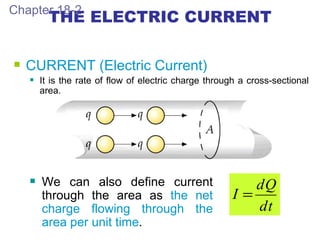The document discusses concepts related to electric charge, electric fields, and electric circuits. Some key points covered include:
- Charged objects exert forces on each other via an electric field according to Coulomb's law. The electric field is defined as the force per unit charge.
- Conductors allow free flow of electric charge while insulators do not. Resistors in circuits control current flow according to Ohm's law.
- Electric potential energy and voltage difference can be defined from the work done in electric fields. Equipotential surfaces exist where electric potential is constant.
- Electric current is the rate of flow of electric charge through a cross-sectional area of a conductor. Current, voltage, and resistance
